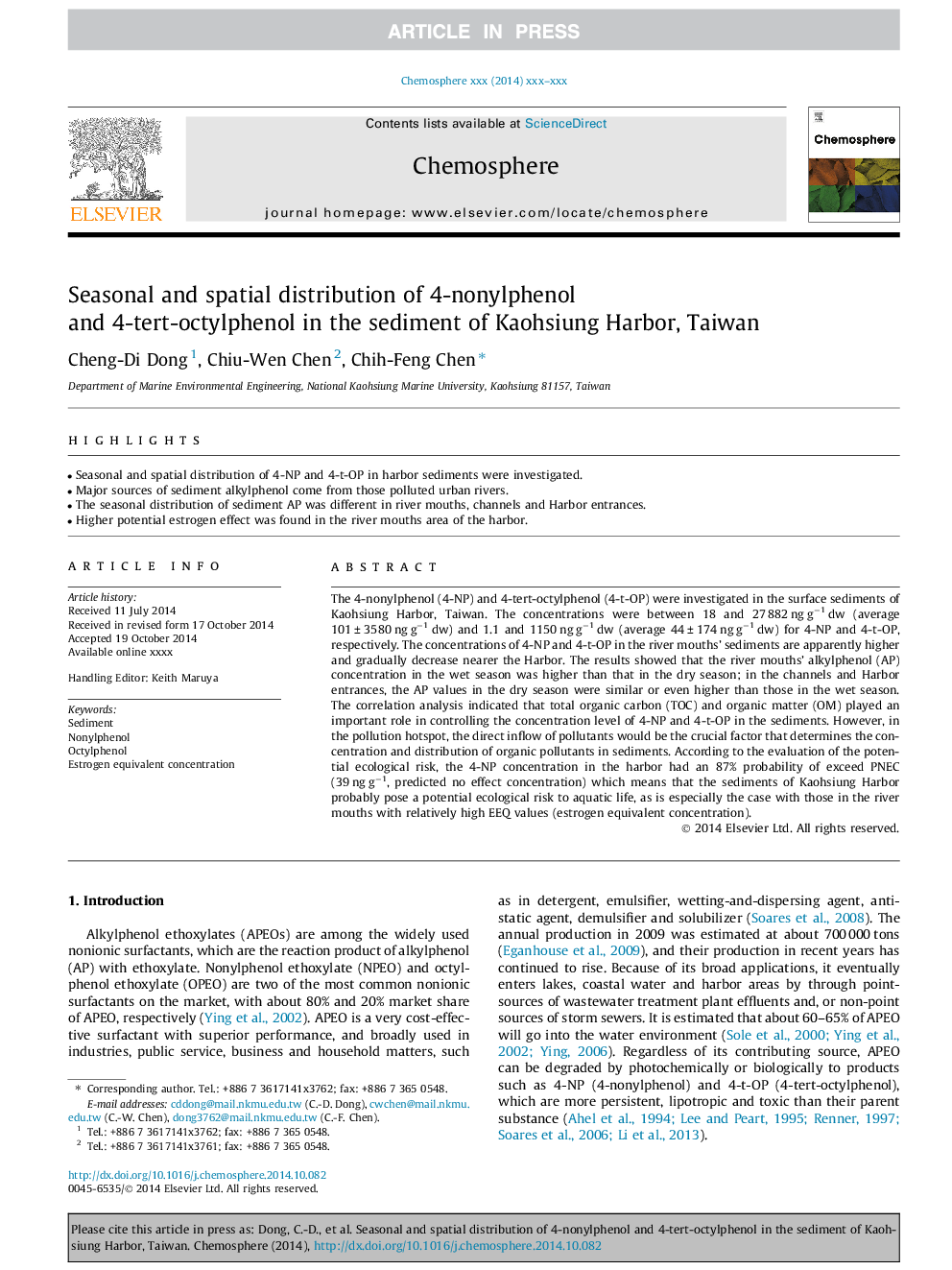| Article ID | Journal | Published Year | Pages | File Type |
|---|---|---|---|---|
| 6307777 | Chemosphere | 2015 | 10 Pages |
Abstract
The 4-nonylphenol (4-NP) and 4-tert-octylphenol (4-t-OP) were investigated in the surface sediments of Kaohsiung Harbor, Taiwan. The concentrations were between 18 and 27 882 ng gâ1 dw (average 101 ± 3580 ng gâ1 dw) and 1.1 and 1150 ng gâ1 dw (average 44 ± 174 ng gâ1 dw) for 4-NP and 4-t-OP, respectively. The concentrations of 4-NP and 4-t-OP in the river mouths' sediments are apparently higher and gradually decrease nearer the Harbor. The results showed that the river mouths' alkylphenol (AP) concentration in the wet season was higher than that in the dry season; in the channels and Harbor entrances, the AP values in the dry season were similar or even higher than those in the wet season. The correlation analysis indicated that total organic carbon (TOC) and organic matter (OM) played an important role in controlling the concentration level of 4-NP and 4-t-OP in the sediments. However, in the pollution hotspot, the direct inflow of pollutants would be the crucial factor that determines the concentration and distribution of organic pollutants in sediments. According to the evaluation of the potential ecological risk, the 4-NP concentration in the harbor had an 87% probability of exceed PNEC (39 ng gâ1, predicted no effect concentration) which means that the sediments of Kaohsiung Harbor probably pose a potential ecological risk to aquatic life, as is especially the case with those in the river mouths with relatively high EEQ values (estrogen equivalent concentration).
Keywords
Related Topics
Life Sciences
Environmental Science
Environmental Chemistry
Authors
Cheng-Di Dong, Chiu-Wen Chen, Chih-Feng Chen,
